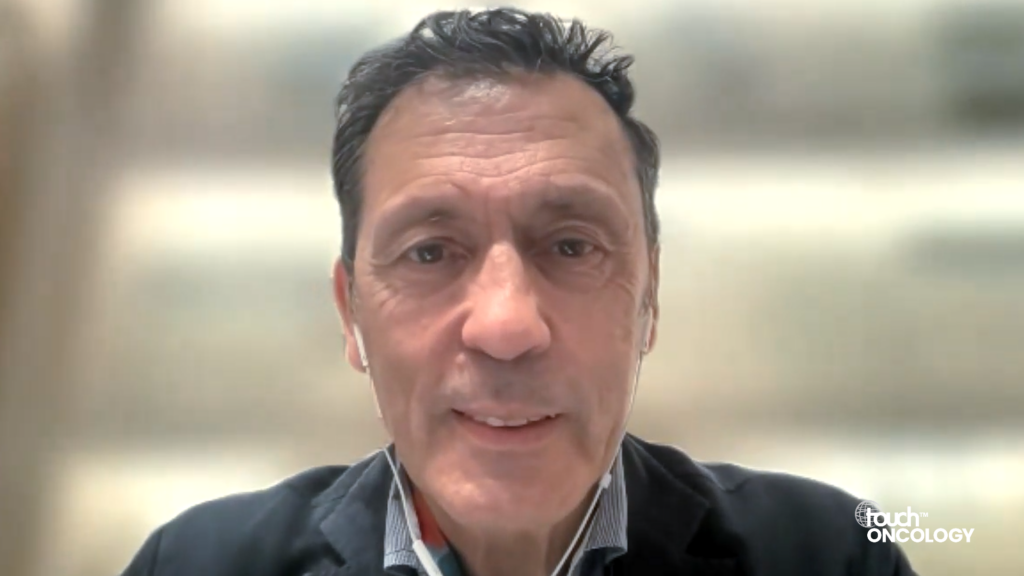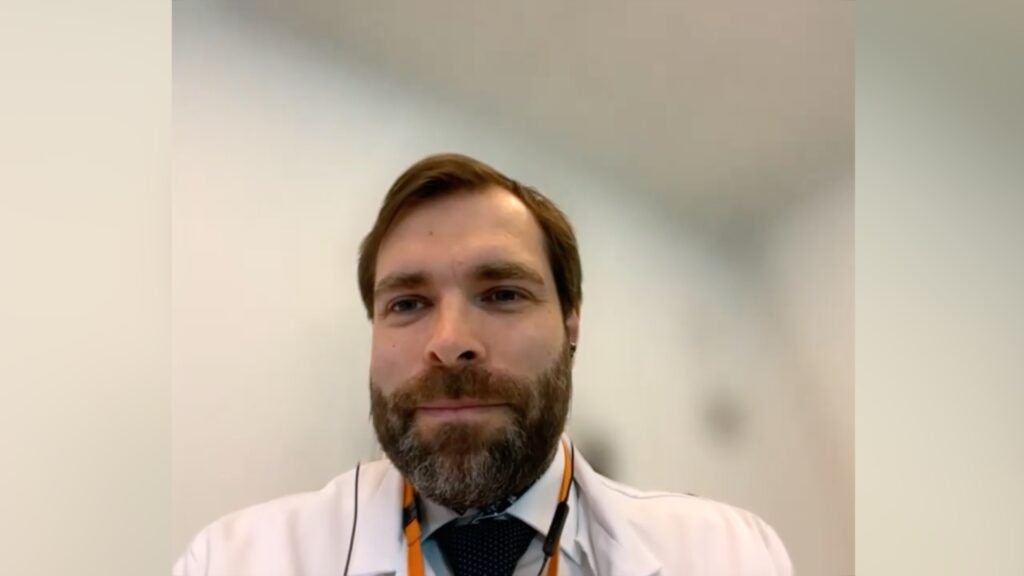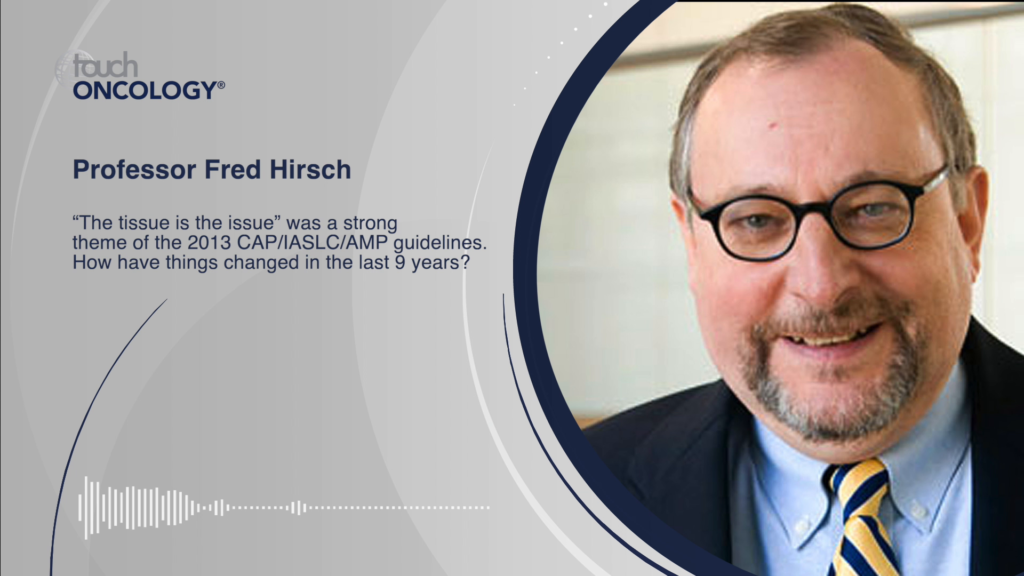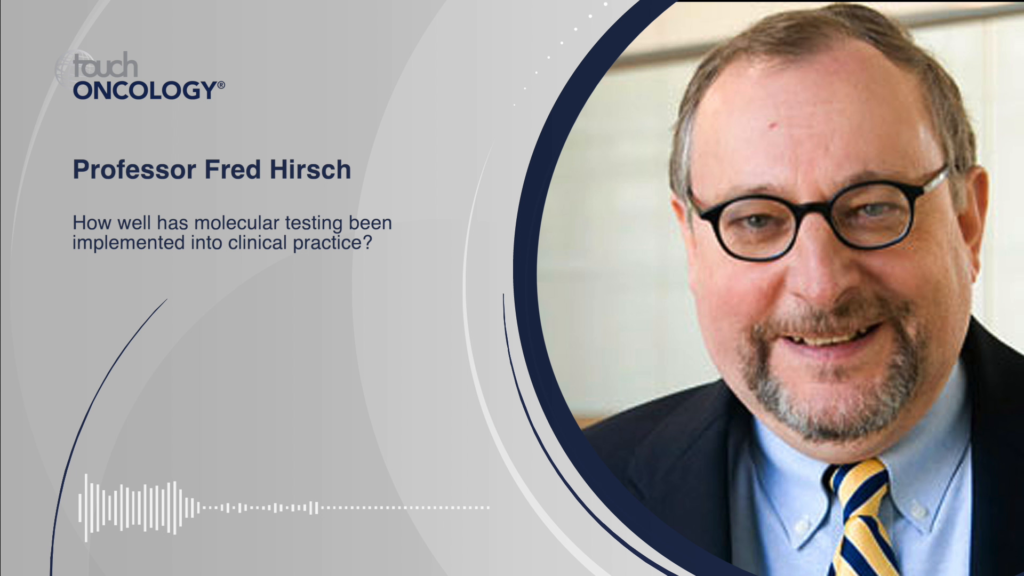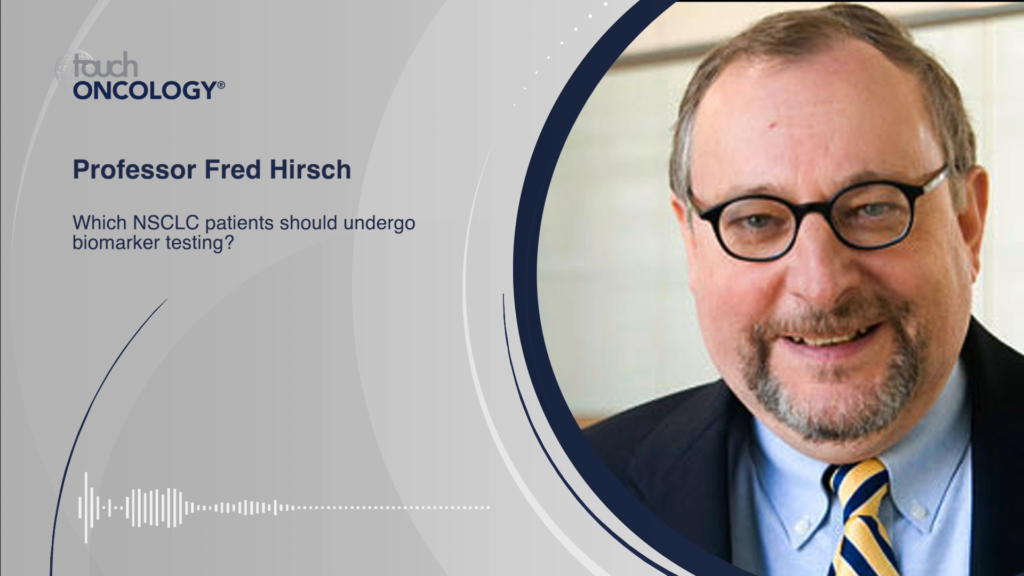Intraoperative molecular imaging enables surgeons to utilise a cancer specific fluorescent dye to improve cancer removal. In this touchONCOLOGY interview, we speak with Dr Sunil Singhal (University of Pennsylvania, Philadelphia, PA, USA) to discuss intraoperative molecular imaging, with focus on its application in lung cancer.
The presentation entitled ‘Intraoperative molecular imaging of lung cancer: The road to FDA approval’ was presented at the American Association for Cancer Research Meeting 2023, 14–19 April 2023.
Questions:
- Please can you give a brief overview of intraoperative molecular imaging? (0:16)
- Can you please give us a brief overview of the session at AACR entitled ‘Intraoperative Molecular Imaging: New Clinical Insights’? (2:23)
- Can you please summarise your presentation entitled ‘Intraoperative molecular imaging of lung cancer: The road to FDA approval’? (4:26)
Disclosures: Sunil Singhal has nothing to disclose in relation to this video.
Support: Interview and filming supported by Touch Medical Media. Interview conducted by Danielle Crosby.
Filmed as a highlight of AACR 2023
Access more content on lung cancer here
Transcript:
I’m Sunil Singhal. I’m a thoracic surgeon at University of Pennsylvania in Philadelphia.
Q. Please can you give a brief overview of intraoperative molecular imaging?
Intraoperative molecular imaging is the concept of giving patients that go for surgery, a fluorescent dye. It is a cancer specific dye that makes tumours fluoresce during surgery. The basis of this principle is that during surgery for cancer, we frequently leave cancers behind. We do not intentionally do this, but we can leave a few residual cancer cells at the margins, which are the edges of the cancer. We can also have additional cancers that may exist other than the one that we went for. So these synchronous cancers, or occult tumours. Then sometimes there are also cancers in the lymph nodes, cancer cells in the lymph nodes.
Right now, when we go to surgery, the surgeons, whether it is thoracic surgeons or neurosurgeons or head and neck cancer surgeons, we depend on a computed axial tomography (CAT) scan, an ultrasound, a magnetic resonance imaging (MRI) or a positron emission tomography (PET) scan before surgery to identify where the cancer is. But then during surgery, we do not have these tools. In the surgery, we depend on our hands and eyes to identify their borders, to make sure we have completely removed the cancer and we have found any extra lesions, and this can be very challenging. So that concept of intraoperative imaging is to add an extra tool in the operating room, and that means injecting patients with a fluorescent probe who’s contrast agent fluoresces in the optical wavelengths that goes to the tumour. Then during surgery, we can use a camera that is at the specified wavelength in the optical range, whether it is near-infrared or near-infrared two or whatever wavelengths that can see the cancer cells better than the human eye.
Q. Can you please give us a brief overview of the session at AACR entitled ‘Intraoperative Molecular Imaging: New Clinical Insights’?
What this session was about was the various applications of this technology. We talked a little bit about the technology, specifically, we talked about the different tracers. Dr Eben Rosenthal spoke about some of the tracers he is working on for head and neck cancer in putting an EGFR targeted approach. Then, Dr Constantinos Hadjipanayis spoke about neurosurgery and applications for gliomas, surgery using tracers called 5-ALA, which is based on the metabolic pathways in tumours, including porphyrin. I spoke about folate metabolism in lung cancer and how we can use that pathway and target that pathway with fluorescent probes.
So there are other probes. We did not delve too deep into some of the other stuff, not because of technology development, but time. We kind of use these as the basis of examples. And what we showed, for example, in my specific talk with lung cancer, we showed that the tracer could be used clinically to identify situations where the surgeon had done a suboptimal job. For example, we found situations where the surgeon had left cancer cells at the margins or staple lines. Therefore, the surgeon was able to use this technology to get better disease clearance at the end of the case. The other scenario that played out was the number of times that the surgeon wanted to remove one cancer and the surgeon was able to use that fluorescence to identify additional lesions.
Q. Can you please summarise your presentation entitled ‘Intraoperative molecular imaging of lung cancer: The road to FDA approval’?
We started by presenting the data from the phase I study and the phase II study, which were quite successful, which ultimately led to a randomized phase III clinical trial. The randomized phase III clinical trial was performed at 12 centres around the USA, and it uses an agent called pafolacianine, which is a folate receptor targeted probe. In that study, there was roughly a 50% occurrence of one of those three events where the surgeon could not find the tumour and had to use imaging, could not find the margins or found additional lesions, which was a very successful trial and ultimately led to the FDA approval for this tracer in December of 2022. So that was the basis of the talk at the AACR a couple of weeks ago.
Subtitles and transcript are autogenerated


